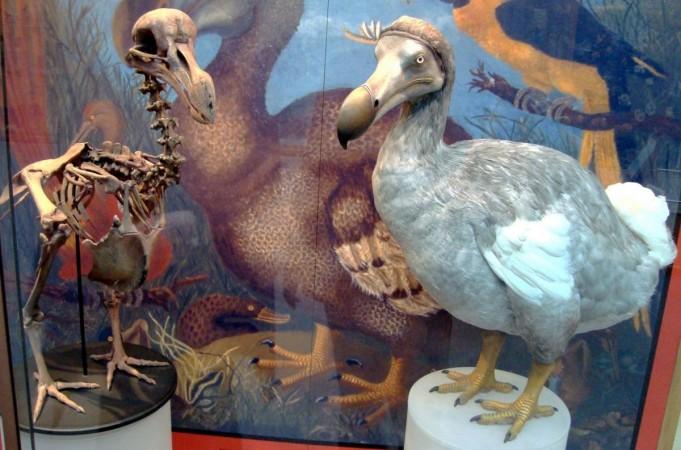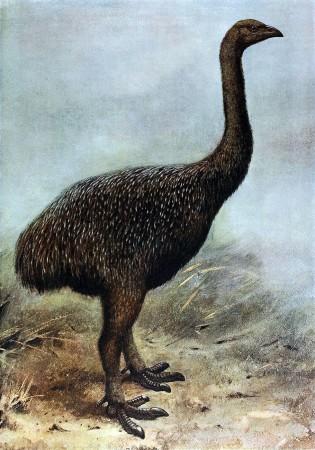Most people are familiar with the phrase, "Dead as a dodo." They were flightless birds that were endemic to the island of Mauritius and were hunted into extinction within 100 years. This is common knowledge as it has been spoken about for few centuries. However, scientists report that humans have done this to several species of birds. According to a new study, birds have experienced a major extinction event caused primarily by human beings in the last 20,000-50,000 years.
The research states that extinction event led to the disappearance of around 10 -20 percent of all bird species. Through the study, the researchers listed 469 avian species that became extinct over the last 50,000 years. Although, they believe that the numbers could be much higher. Most of these extinct species lived on islands, and were mostly large and flightless.
"Our study indicates that before the major extinction event of the past millennia, many more large, even giant, as well as flightless avian lived on our globe, and the diversity of birds living on islands was much greater than today," said Dr. Shai Meiri, lead author of the study in a statement. The findings were published in the Journal of Biogeography.
Finding Extinct Species of Birds

There are several species of animals that once roamed the Earth or swam in the oceans in large numbers. However, human activities, mostly hunting and loss of habitat led to their extinction in a few decades or centuries. Dodo, California Grizzly Bear, Steller's sea cow, and Aurochs, are some well-known examples.
The number of bird species that went extent in the last 300 years is considerably well documented and older species have been known from remains unearthed at paleontological and archaeological sites across the world. But the exact numbers are still uncertain.
In the current study, the authors aimed to determine how many species of avians became extinct because of humans. "We conducted a comprehensive review of scientific literature, and for the first time collected quantitative data on the numbers and traits of extinct species of birds worldwide," explained Dr. Meiri. Data on all birds that became extinct since human colonization were gathered—50,000 years for Australia and 20,000 years for the rest of the world.
If the last recorded fossil was dated earlier than the chosen periods, it was excluded. The data on extinct birds were collected from the primary literature, and other sources such as the IUCN (International Union for Conservation of Nature) Red List and BirdLife. In the end, the team considered 469 species of birds as extinct. Other important information such as their body weight and length, flight ability, geographic range, date of extinction, and type of remains found were also recorded.
Mostly Endemic to Islands
![Giant Mihirung [Dromornis stirtoni] (Representational Picture) Giant Mihirung](https://data1.ibtimes.co.in/en/full/764310/giant-mihirung.jpg?w=812&h=426&l=50&t=40)
Of the listed species, around 90 percent lived on islands. The authors suggest that that the massive extinction was mainly caused by humans either through hunting or by animals that they brought with them to islands. They introduced animals such as cats, monkeys, pigs, and rats, some of whom preyed on the birds or their eggs.
This assumption of the team is chiefly rooted in two specific facts. Firstly, vast portions of recovered bird remains were from human settlement sites; seemingly belonging to avians consumed by the residents. Secondly, in most cases, extinctions befell bird species within a short time after human arrival. However, few species of mainland birds also became extinct, probably due to human activity.
Large, Flightless, and Hunted
In their analysis, the researchers pointed out that most of the extinct species of birds were large—some very large—and flightless. As they served as sources of large quantities of food, they were the favored targets for hunters. The authors noted that the extinct species had body masses that were up to 10 times larger than that of surviving species. Older studies have found similar patterns among reptiles and mammals, particularly turtles and lizards that were endemic to islands. The larger species became extinct as they were hunted extensively by humans.

A large section of extinct bird species were flightless. This made it difficult for them to escape pursuing hunters or animals. According to the study, the number of flightless bird species that went extinct is twice the number of flightless species that exist today. In total, 68 percent of all the flightless bird species that science is aware of became extinct. For example, hunting led to the extinction of the moa bird in New Zealand within 300 years.
"We hope that our findings can serve as warning signals regarding bird species currently threatened with extinction, and it is, therefore, important to check whether they have similar features. It must be noted, however, that conditions have changed considerably, and today the main cause for the extinction of species by humans is not hunting but rather the destruction of natural habitats," expressed Dr. Meiri.

















